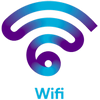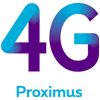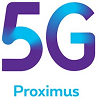Wi-Fi and mobile Internet (5G, 4G or 3G)
What is the difference between Wi-Fi and mobile Internet (2G, 3G, 3G+, 4G or 5G)? Surfing via Wi-Fi is cheaper than surfing via mobile Internet, but the Wi-Fi signal is limited to a small area, such as a cafe, airport, etc. You can check the network coverage map to see where mobile Internet is available.
Wi-Fi uses a local wireless network
Wi-Fi uses a local wireless network to transport data. You can surf the net if you are close to a modem or hotspot.
- To surf at home, you simply connect to your Wi-Fi network.
- To surf via a Public Wi-Fi hotspot in Belgium, you must first set up Public Wi-Fi on your device.


Mobile Internet uses a mobile telephone network
Mobile Internet uses a mobile telephone network (and therefore your SIM card) to transport data. You can surf wherever you can call with your mobile phone.
- Follow our interactive user manual and configure your mobile or tablet for surfing on the Internet.
- Can't find your device in the list? Configure the Internet settings manually.



With your SIM card, you can use the following networks: 2G (GPRS or EDGE), 3G (UMTS), 3G+ (HSDPA or HSPA+) and 4G (LTE). You may be switched from one network to another (e.g. from 3G to 4G) because your device always chooses the best available network.
For 5G, you will need:
- 5G network on your mobile: check out our network coverage map.
- A 5G compatible device: see the list of compatible devices .
- A 5G mobile plan: check out our mobile plans for private or business customers.
Do you have another question about 5G? Check our frequently asked questions about 5G .